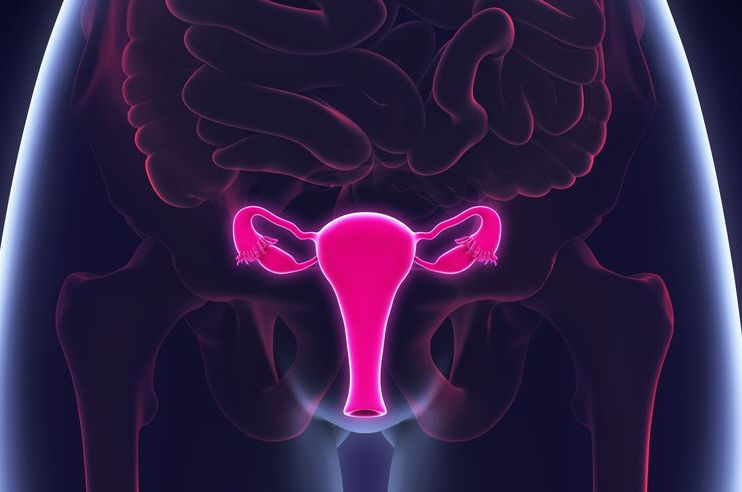Laparoscopic Myomectomy
Laparoscopic Myomectomy, also called Robotic Myomectomy is a surgical procedure of removing fibroids through small abdominal incisions. Laparoscopic Myomectomy is suggested and advised for those who experience problems due to fibroids.
Why is Laparoscopic Myomectomy done?
If there are many causes and symptoms that trouble your normal activities such as heavy menstrual bleeding, pelvic pressure or urinary incontinence, then doctors can suggest laparoscopic myomectomy. Some of the reasons to choose myomectomy are –
If planning to bear children.
If the uterine fibroids are interfering with fertility.
If you want to keep the uterus and just want to remove the fibroids.
Types of Myomectomy Techniques
Several techniques are used to remove the fibroid inside the uterus. The choice of the technique can depend on various factors such as the location and size of the fibroids as well as the characteristics of the woman. Various types of Myomectomy include –
Laparoscopic Myomectomy is performed to remove the fibroids in the uterus. This technique is performed using a narrow telescopic like an instrument in order to see inside the abdomen. The procedure involves 4 to 5 incision in the navel and lower abdomen. Fibroids are shell outside the uterus repairing the uterus incision. Recovery time is around 2 to 3 weeks and requires one night of hospitalization. Complications such as bleeding, injury to internal organs, an infection might occur during this procedure which is minimal. Robotic-assisted laparoscopic is also performed for the removal of the fibroids where the robotic system translates the surgeon’s hand movement outside of the patient’s body and precise surgical movement inside the abdomen.
Abdominal Myomectomy, also called laparotomy is performed using a vertical or horizontal incision in the abdominal wall. It allows the surgeon to have direct access to the patient’s uterus and usage of traditional surgical techniques and instruments is done. Anesthesia is given to the patient and a full recovery is expected within 4 to 6 weeks.
Hysteroscopic Myomectomy involves removing a submucosal fibroid from the inside wall of the uterus. A narrow telescope-like instrument is passed through the cervix to visualize the uterus activity in order to allow surgery inside the uterus. This procedure is only performed for smaller fibroid. This procedure is performed under anesthesia in an operating room. Some of the complication faced during this procedure includes fluid overload, bleeding, the formation of scarring inside the uterus, and uterine perforation.
How is Laparoscopic Myomectomy performed?
The procedure involves anesthesia after which the surgeon makes four small incisions. These incisions are of about half an inch long each in the lower abdomen. The belly is filled with carbon dioxide gas so that the surgeon can see inside the abdomen. A laparoscope is placed inside one of the incisions by the surgeon. A laparoscope is basically a lighted thin tube with a camera attached on one end. On the other incision, small instruments are placed
In the case of the robotic-assisted laparoscopic procedure, the surgery is done by controlling the instruments remotely with a robotic arm. To remove the fibroids from the uterus, the surgeon will cut the fibroids into small pieces. If the fibroids are too large, abdominal myomectomy treatment is used where large incisions are made in the abdomen to remove the fibroids. The fibroids are pushed out of the vagina or through the small openings in the abdomen. Once the fibroids are removed, the surgeon will remove the instruments, release the gas and close the incisions.
After the Procedure of Laparoscopic Myomectomy
Women usually have to stay for around a day in the hospital after the procedure is done. Usually, doctors prescribe oral pain medications after the surgery and give instruction on the diet and activities. Women can expect staining and vaginal spotting just for a couple of days up to six weeks depending on the type of procedure done.
Laparoscopic Myomectomy is a less invasive procedure in which women have less pain, lose less blood, and can return to normal activity more quickly as compared to other treatments such as laparotomy.
Benefits of Laparoscopic Myomectomy treatment
Compared to other treatments, Laparoscopic Myomectomy is considered as an effective, appropriate, and safe procedure to remove fibroids from the uterus. Some of the benefits are as follows –
It causes less loss of blood during the operation process.
The treatment does not take a long time where the patient gets a discharge within a day.
It has a quick postoperative recovery
What are the risks involved in Laparoscopic Myomectomy?
Even though Laparoscopic Myomectomy has low complications and risks involved, it might occur that sometimes unique challenges are faced in some cases. Some of the risks involved in the procedure include –
Excessive blood loss which is higher with the larger uterus. Due to heavy menstrual bleeding women already suffer from low blood count (anemia). This creates higher risk due to blood loss and doctors always suggests ways to build the blood count before going through the surgery. An extra step is taken by the doctors to avoid excessive bleeding that includes injecting medications around fibroids to clamp down the blood vessels and to block flow from the uterus arteries.
There can be a certain risk during pregnancy. Doctors can recommend performing cesarean delivery (C-section) if there had been a deep incision in the uterine wall. This is done to avoid rupture of the uterus during labor which is a very rare complication during pregnancy. Fibroids are associated with complications in the pregnancy.
There can be a rare chance of hysterectomy where the surgeon removes the uterus if the bleeding is uncontrollable and also other abnormalities are found in addition to fibroids.
There can be rare chances of the cancerous tumor spreading which can be mistaken as fibroids. In case if the tumor is taken out through a small incision, it can lead to breaking the tumor into little pieces and spreading it across. As women age and after menopause, this chances and risk of such case can increase.
After surgery, there can be adhesions – bands of scars due to incision into the uterus in order to remove fibroids. Due to adhesion formed within the uterus, there can be chances of light menstrual periods and difficulty of fertility. Chances of adhesion are more in Laparoscopic myomectomy.
There are chances that new fibroids may grow back again after the myomectomy procedure done. The risk is greater in younger women as compared to the women who are near menopause or with few fibroids.
How can one prevent possible surgical complications?
Doctors recommend below preventive measures to minimize the risk of myomectomy surgery –
Heavy menstrual periods can cause iron deficiency anemia. Usage of vitamins and iron supplements to allow build up the blood count during the surgery.
Therapy to shrink the fibroid includes GnRH agonist therapy which allows the surgeon to use minimal invasive approach during surgery. This therapy can cause night sweats, hot flashes, vaginal dryness, and menopause. After the medication is done, these problems and discomforts stop occurring.
Hormonal treatment is another way to prevent anemia and surgical complication. In order to decrease or stop the menstrual flow, doctors recommend GnRH i.e. Gonadotropin-releasing hormone agonist, birth control pills, and other hormonal medications. These medication blocks the production of progesterone and estrogen which stops menstruation, thus allowing the body to produce hemoglobin and iron stores.
How to prepare before the Laparoscopic Myomectomy procedure?
One needs to fast i.e. stop drinking fluids and eat anything in the hours before the surgery. Doctor’s instructions need to be followed before the surgery. In case if the patient is already on any medication, it is preferable to consult the doctor to continue with the medication or not.
Check with the doctor the anesthesia is a general one or spinal anesthesia. General anesthesia is used for laparoscopic, robotic, abdominal, and certain hysteroscopic myomectomy in which the patient is asleep during the surgery. Spinal anesthesia is used for certain hysteroscopic myomectomies in which the patient is injected on the spinal canal to numb the nerves in the lower half of the body.
As the fibroids interfere with the fertility, laparoscopic myomectomy is demanding and has advantage such as shorter hospitalization, reduced postoperative pain, reduced febrile morbidity, quick recovery, and reduced blood loss. The postoperative adhesion formation risk is also reduced due to laparoscopic myomectomy. The risk of complication in future pregnancies due to uterine rupture is also reduced due to this surgery.
Recovery Tips for the patient
Some of the recovery tips recommended to the patient after undergoing laparoscopic myomectomy treatment are as follows –
Doctors will provide medications after the surgery as it is likely to suffer from pain. It is advised for the patient not to lift anything heavy until the incision is fully healed.
Doctors usually advise waiting for around six weeks before having sex after the surgery.
If planning to conceive after the surgery, the patient might need to wait for around three to six months to let the uterus heal fully. This also depends on what type of surgery the patient has undergone
We can mention and conclude that if an experienced surgeon performs laparoscopic myomectomy it can be considered as a safe technique with a good result and an extremely low failure rate in terms of pregnancy outcome. The Best diagnosis is offered by Apollo Cradle Jayanagar who has experienced surgeons and doctors.
Apollo Cradle Jayanagar is capable enough to handle these cases of laparoscopic myomectomy. The experienced surgeons at Apollo Cradle Jayanagar handle the surgical procedures in an easy way. The doctors, nurses, and surgeons at Apollo Cradle Jayanagar are highly efficient and experienced in performing all kind of gynae laparoscopic surgeries and high-risk deliveries. The specialized doctors’ team at Apollo Cradle Jayanagar gives the best treatment to its patients. Apollo Cradle Jayanagar is one of the best maternity hospitals which provides intensive and comprehensive care for both women and children.

Lorem ipsum dolor sit amet, consectetur adipiscing elit. Phasellus ac aliquam velit. Phasellus dapibus cursus erat, quis consequat urna efficitur non. Phasellus cursus, erat quis mollis lobortis, urna risus hendrerit metus, id dictum metus purus vel magna. Nulla non purus sit amet arcu convallis egestas
Lorem ipsum dolor sit amet, consectetur adipiscing elit. Phasellus ac aliquam velit. Phasellus dapibus cursus erat, quis consequat urna efficitur non. Phasellus cursus, erat quis mollis lobortis, urna risus hendrerit metus, id dictum metus purus vel magna. Nulla non purus sit amet arcu convallis egestas
Lorem ipsum dolor sit amet, consectetur adipiscing elit. Phasellus ac aliquam velit. Phasellus dapibus cursus erat, quis consequat urna efficitur non. Phasellus cursus, erat quis mollis lobortis, urna risus hendrerit metus, id dictum metus purus vel magna. Nulla non purus sit amet arcu convallis egestas

COSMETIC SURGERY
Lorem ipsum dolor sit amet, consectetur adipiscing elit. Ut elit tellus, luctus nec ullamcorper mattis, pulvinar dapibus leo.

COSMETIC SURGERY
Lorem ipsum dolor sit amet, consectetur adipiscing elit. Ut elit tellus, luctus nec ullamcorper mattis, pulvinar dapibus leo.

COSMETIC SURGERY
Lorem ipsum dolor sit amet, consectetur adipiscing elit. Ut elit tellus, luctus nec ullamcorper mattis, pulvinar dapibus leo.
